- Energy Storage & Decarbonization Pathways
- Grid Infrastructure
- Just Transition
- Tax Incentives & Appropriations
- Transmission & Power Markets
- Blog
High Stakes for Energy Transition Visible at ACORE Grid Forum 2021
By Maheen Ahmad, Blake McCarren and Tyler Stoff
November 16, 2021
Coming at an inflection point for the Build Back Better agenda and nation’s transition to a renewable energy economy, the ACORE Grid Forum featured key thought leaders on the policy, business and technologies necessary to build a clean energy grid.
Policy Priorities to Accelerate Renewable Deployment in the Sustainable Infrastructure Plan
The Grid Forum kicked off with a timely keynote interview with U.S. Representative Kathy Castor (D-FL), who chairs the House Select Committee on the Climate Crisis. Castor referenced the urgency of the recent United Nations’ Intergovernmental Panel on Climate Change report in underscoring the ongoing negotiations to finalize and pass the Build Back Better Act, which would represent historic climate and clean energy legislation. Castor also discussed legislative and regulatory efforts to build the 21st century grid we need to achieve a clean energy future. Her Efficient Grid Interconnection Act would bring renewables online more quickly by eliminating lengthy interconnection queues, and additional legislation can help build the nationwide Macro Grid we need to fully decarbonize. Congresswoman Castor enthusiastically declared, “If you care about rising costs, you will do everything in your power to invest in clean energy.”

Renewable energy developers, buyers, operators and investors followed Castor on a panel to discuss the renewable sector’s infrastructure priorities. Panelists broadly agreed that the Build Back Better Act and the Infrastructure Investment and Jobs Act would provide transformational policy support for continued growth of the renewable sector. Specifically, the clean energy tax platform in the Build Back Better Act will provide the needed certainty to accelerate the investment we need to decarbonize the power sector, while the backstop siting authority and new transmission investments in the bipartisan infrastructure framework will help ensure our nation’s vast renewable resources are more efficiently delivered to the grid. Although panelists felt that more work would ultimately need to be done, specifically to ensure effective implementation of pending federal legislation, there was widespread optimism about the benefits these two historic initiatives could have on the renewable sector.
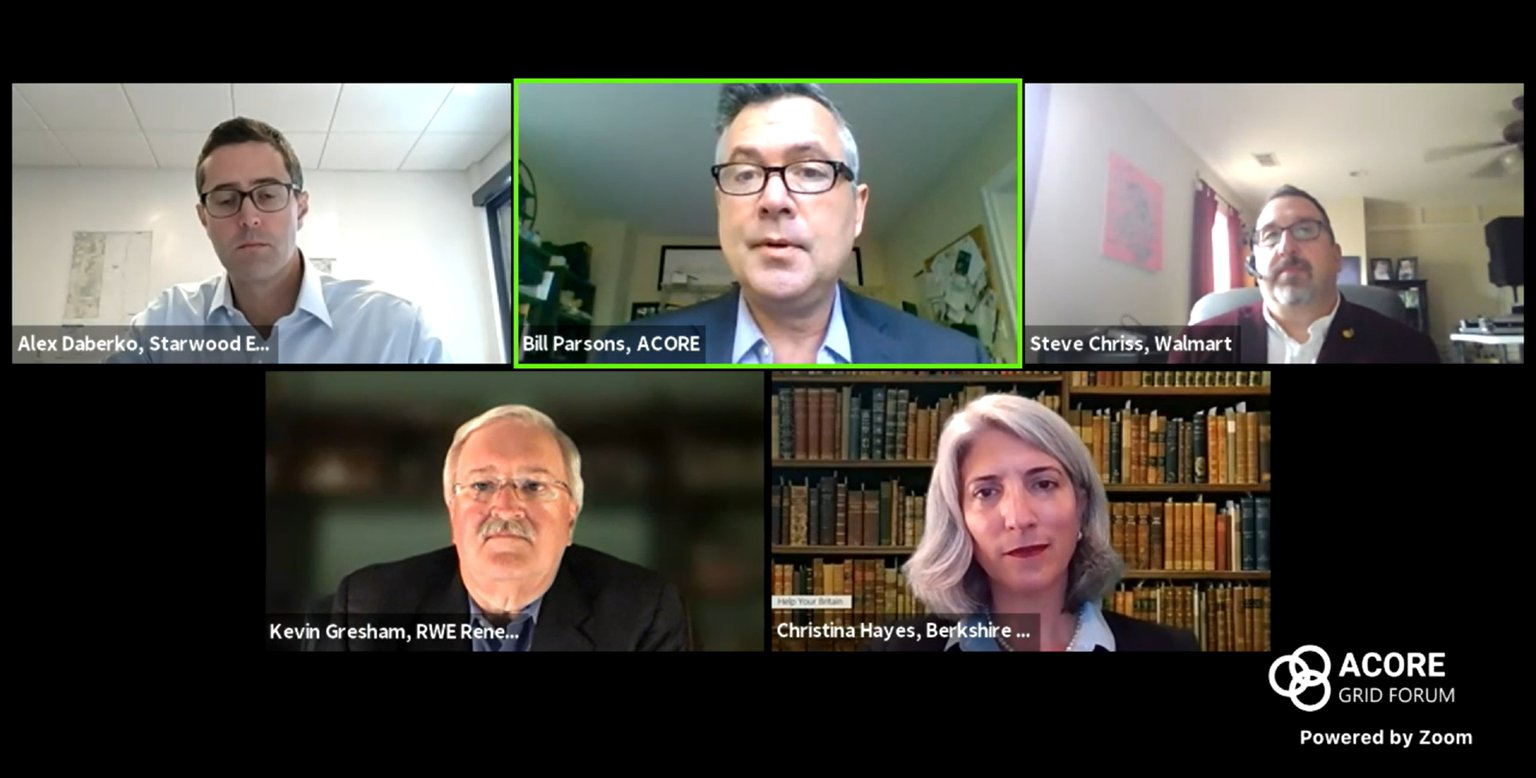
Kelly Speakes-Backman, Acting Assistant Secretary for Energy Efficiency and Renewable Energy at the U.S. Department of Energy, joined the Grid Forum for a keynote conversation on her Department’s groundbreaking focus on achieving a carbon-free power grid by 2035 and a carbon-free economy by 2050.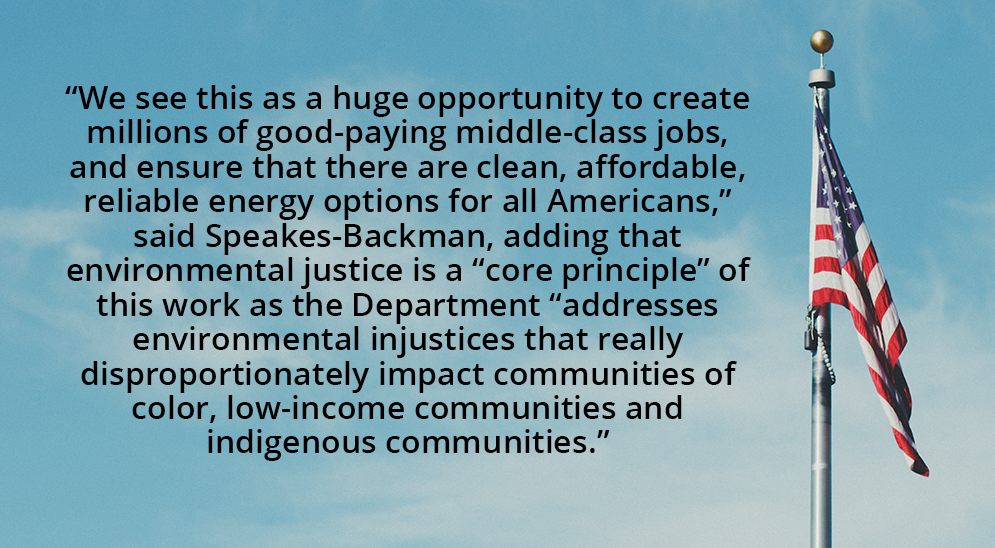
To reach those ambitious clean energy goals, the Department is prioritizing programs that accelerate the deployment of existing renewable energy technologies, as well as a set of “Energy Earthshots” to catalyze newer technologies like long-duration storage and hydrogen. Speakes-Backman also explained how the historic clean energy tax incentives and unprecedented investments in research and development included in the Build Back Better legislation will help decarbonize every sector of the economy.

Ensuring a Just Transition to Renewable Energy
Recognizing the importance of centering environmental justice in the clean energy transition, an expert panel dove deep into the importance and implications of this priority. Panelists explored how the Biden administration’s Justice40 initiative, ensuring that disadvantaged communities receive at least 40 percent of the overall benefits from federal climate and clean energy investments, will begin to reverse historic injustices created by polluting sources of power generation. The group’s consensus was that community-based activists and organizations have helpful ideas and are willing to share them, but companies need to do a better job of building trust with these groups by seeking out community input and incorporating that feedback into project planning and development. Panelists offered ways to implement environmental justice principles at every stage of renewable energy project development – including siting projects to benefit historically disadvantaged communities, working with women- or BIPOC-owned businesses whenever possible, and reinvesting in communities once a project is complete.
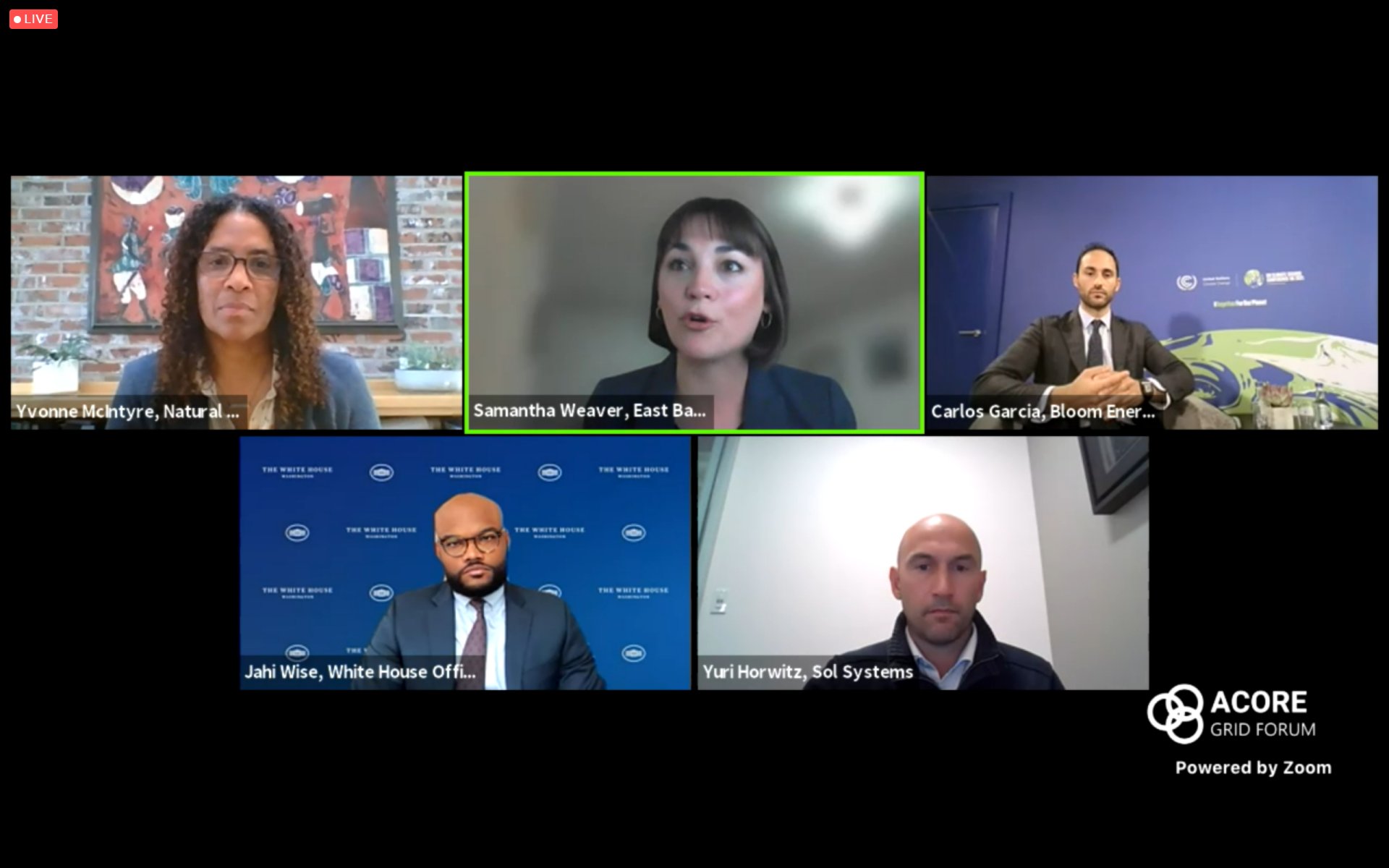
U.S. Representative Donald McEachin (D-VA), who serves on both the House Committee on Energy & Commerce and the House Select Committee on the Climate Crisis, addressed Grid Forum attendees on legislative proposals to ensure that environmental justice remains a priority throughout the energy transition. Congressman McEachin highlighted his Environmental Justice for All Act, which would empower community leaders to be involved in decision-making processes that seek to address injustices in their communities.

Transmission Policy Speeds Ahead While Power Market Debate Continues
“Sometimes the regulatory structures are behind; sometimes they’re ahead,” said Federal Energy Regulatory Commission (FERC) Commissioner Mark Christie, who described his job as keeping FERC on the right side of the regulatory timeline. Acknowledging rapid change in the nation’s energy resource mix, Christie said that maintaining reliability and protecting consumers are key during the transition. Additionally, Christie acknowledged that interconnection bottlenecks for renewable resources were inappropriately delaying the clean energy transition and that resolving the “chaos” of over 700 gigawatts of renewables waiting to interconnect with the grid is a priority issue. Commissioner Christie was also forward-leaning on the importance of transmission, noting how much it helped maintain reliability and lower costs during Winter Storm Uri. When pressed on proposals to pay for resolving interconnection issues by better allocating costs across the full range of beneficiaries, including consumers who would enjoy lower electricity bills, Christie demurred. “[Interconnection costs] should be spread among all the developers that are benefiting from it. When you start talking about allocating costs to consumers, my antennae go up because I want to see what costs you’re putting on consumers. The devil’s in the details. One of my two priorities is … protecting consumers from costs I don’t think they ought to be stuck with.” The question of how best to allocate costs in order to effectively build a 21st century clean energy grid will remain an important issue at the Federal Energy Regulatory Commission.
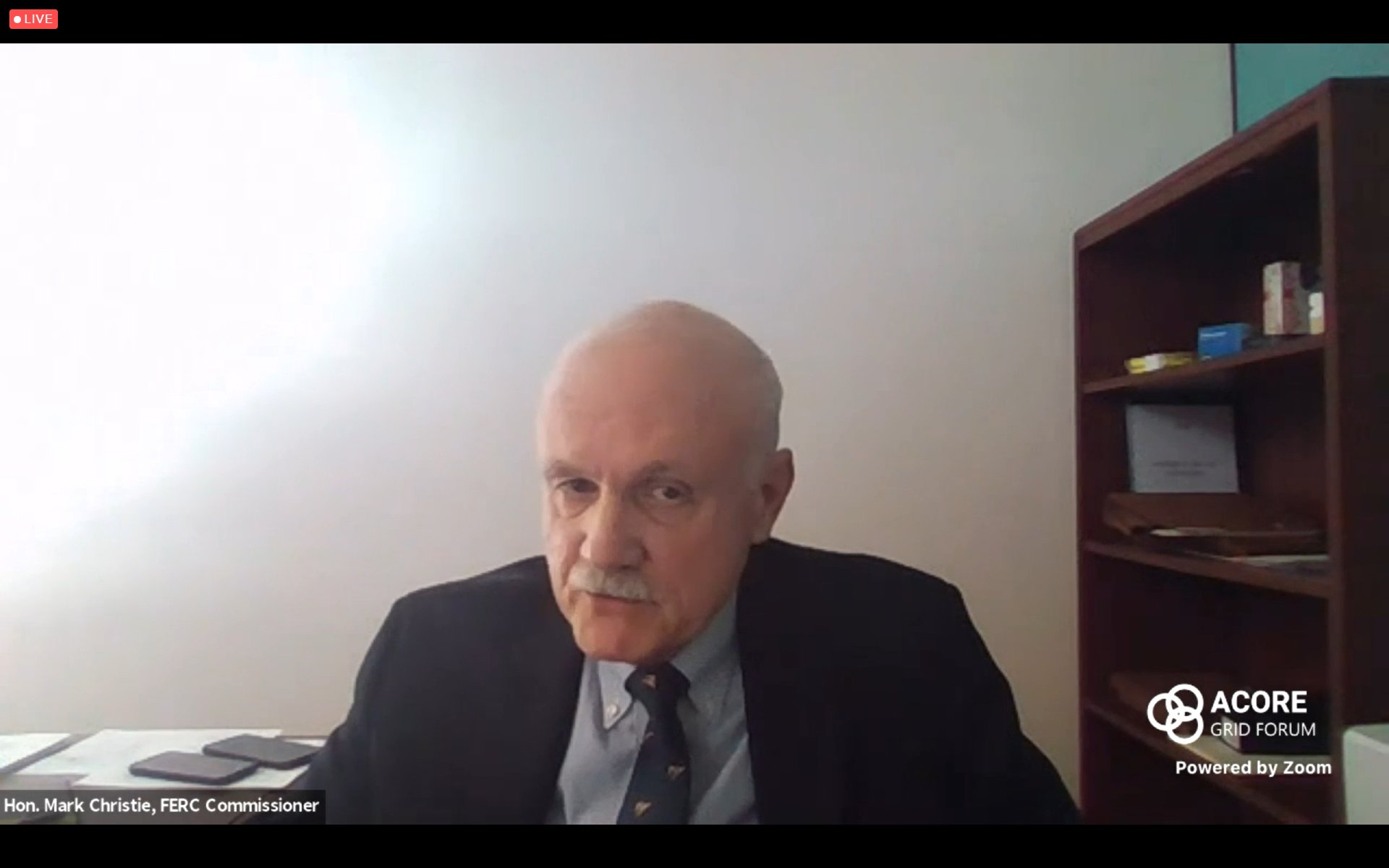
A panel of transmission developers, environmental advocates and FERC staff took an in-depth look at FERC’s year of transmission action. With the Commission starting a rulemaking process to reform transmission policy and launching a partnership with states to explore areas of mutual interest, the electric lines that can move clean electrons from generators to consumers were the clear star of energy policy in 2021. FERC began its transmission policy reforms precisely because it identified the ramifications of the rapidly changing resource mix and need to enable continued progress, as clean resources have different needs than legacy fossil generation. Instead of a grid built piecemeal, a clean energy grid will need to be planned and built quickly at less consumer cost. Panelists noted that FERC reform of transmission planning was necessary but insufficient to achieve the transmission capacity growth needed for a clean energy grid. Newer, larger HVDC transmission lines aren’t monetized under the current policy apparatus, nor are low-cost, grid-enhancing technologies that can enhance transmission capacity without the need to build new lines.
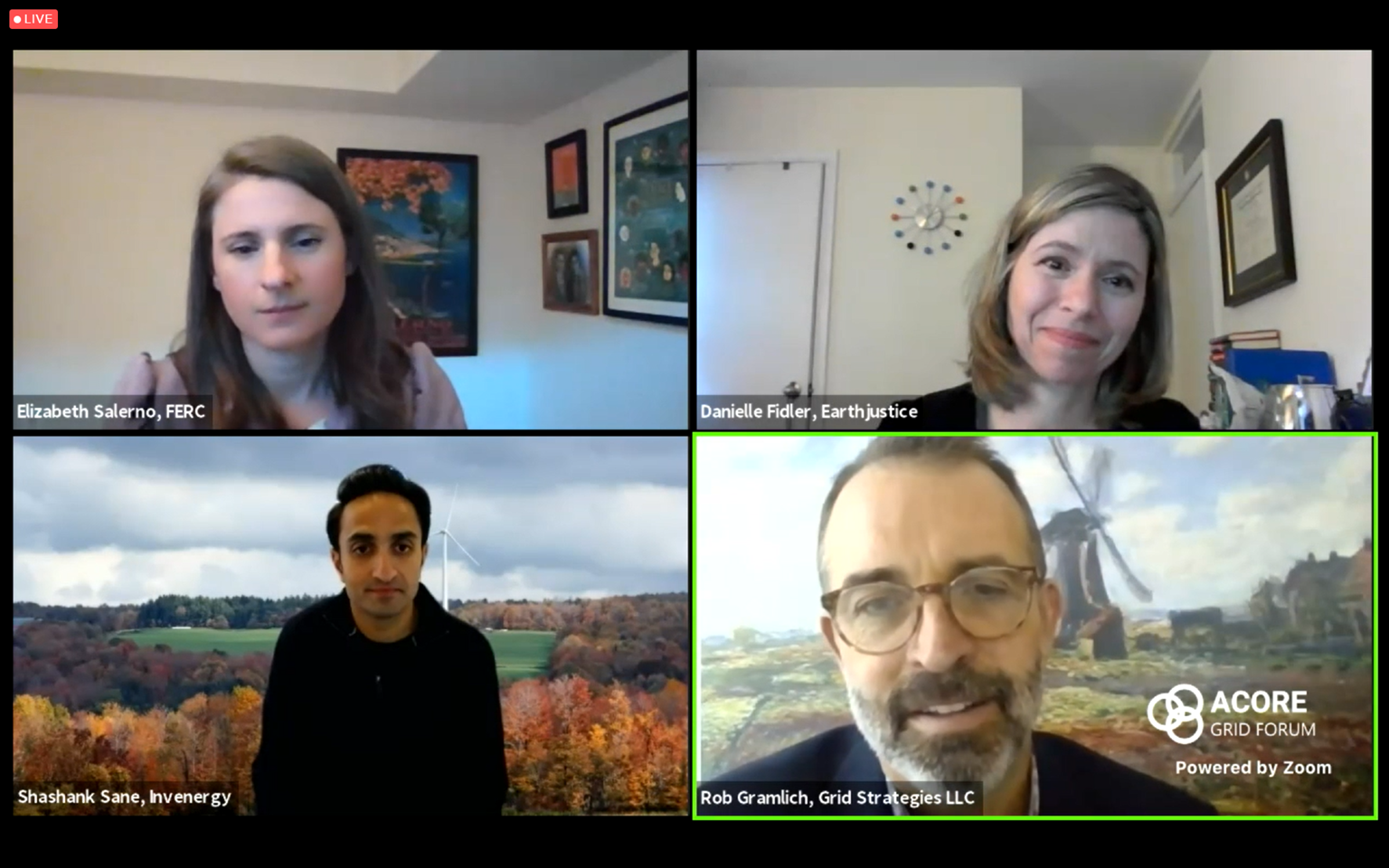
Nearly three-quarters of the nation’s electricity moves through wholesale power markets, where electricity is bought and sold on a least-cost basis among generators, utilities and traders before reaching end-use customers. Speakers on the “Expanding Wholesale Markets: What’s Next in the West and Southeast?” panel discussed how the Southeast has recently seen an expansion of utilities trading excess electricity, but without the characteristics of markets that have lowered consumer costs and increased renewable deployment in other regions of the country. The panel noted that Nevada and Colorado recently both passed laws to join power markets as a way to help meet decarbonization goals, while North and South Carolina are beginning to study such a model. Though policies differ in the Southeast and West, consumer interests are shared. Large renewable buyers are seeking an increased role as they try to buy more clean energy while keeping prices in check. Moreover, markets benefit from their ability to scale, as larger geographic areas require less overall generator redundancy to maintain reliability, lower costs, and prevent unnecessary construction and related emissions.

Current, Emerging Technologies Both Key to Realizing an Emissions-Free Grid
With the implementation of FERC Orders 841 and 2222 now underway, speakers on the “Integrating DERs, Hybrids and Storage Across Power Markets” panel called for state utility commissions to accurately value DERs and storage resources, noting that power market operators have already started this important work. Proper valuation of these technologies would both increase their deployment and ensure that the benefits they provide flow through to customers. Panelists endorsed a technology-neutral approach to pricing distributed sources and storage technologies, where the pricing is based primarily on the services provided to the grid rather than the specifics of the generating technology.
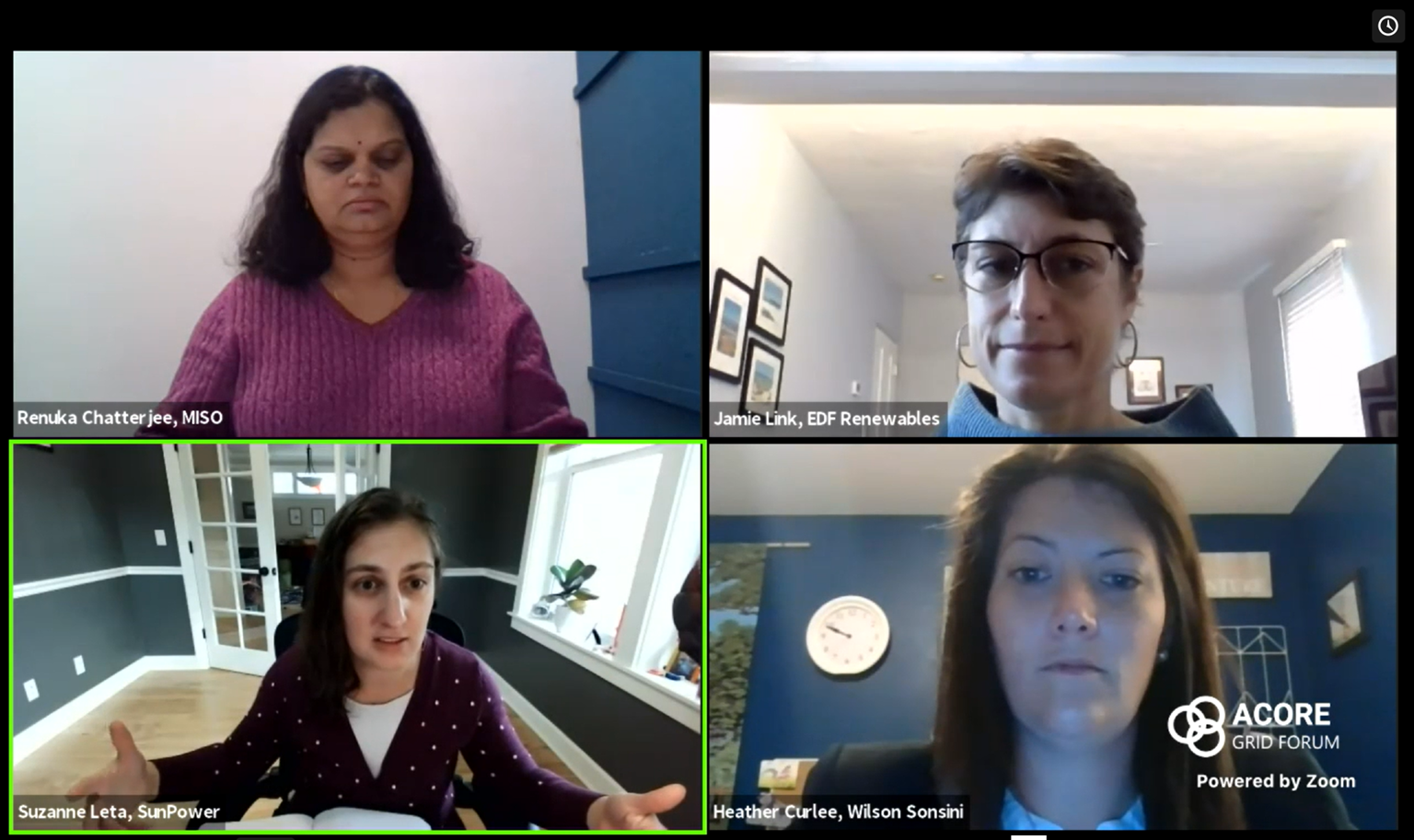
The Grid Forum also included a robust discussion on deployment of newer or otherwise underutilized “clean firm” energy technologies needed to reach the final stages of decarbonization. An emissions-free grid is within reach as panelists asserted that greater deployment of clean firm technologies such as long-duration energy storage, green hydrogen and geothermal energy are all possible with appropriate regulatory, legislative and financial support. While transmission buildout and renewable tax incentives continue to be foundational, speakers noted a shortfall in investment in new clean firm technologies due to perceived risk. For that reason, federal programs like the Department of Energy’s Loan Program Office can be instrumental in bringing down capital costs for new projects and incentivizing technological innovation.
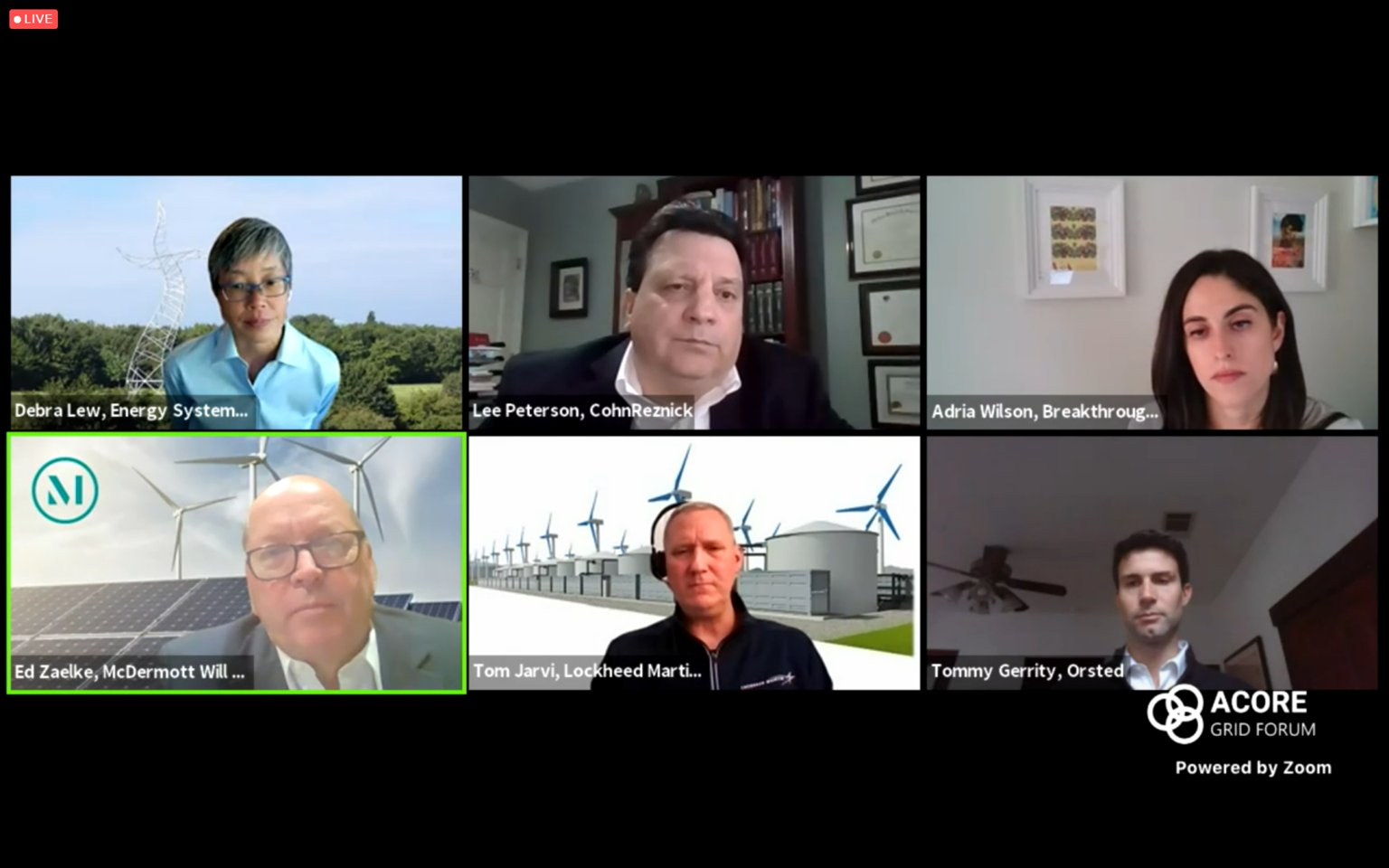
On behalf of the entire ACORE team, thank you to all who were able to attend the 2021 ACORE Grid Forum. Registered attendees can watch the program on our conference hub until December 8, 2021. Others who would like to access Grid Forum content can reach out to events@acore.org to inquire about post-event pass options.
###
Join leaders from across the renewable energy sector.

What will our next 20 years look like? Here’s the truth: they’ll be better with ACORE at the forefront of energy policy.
Shannon Kellogg
Amazon Web Services (AWS)
